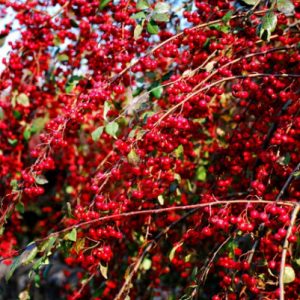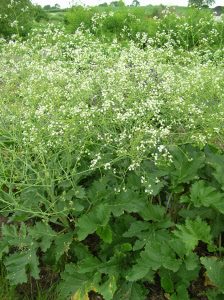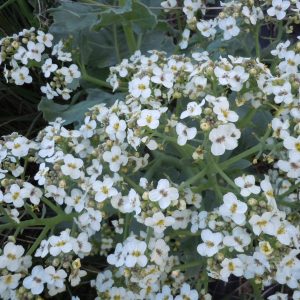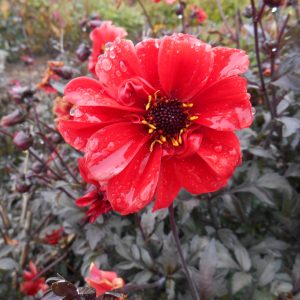Shop
Showing 217–224 of 788 results
-
Cotoneaster multiflorus Showy cotoneaster, Many-flowered cotoneaster Z 4-8
Descriptively named “many-flowered” this specimen, fountain-shaped shrub with arching branches covered in spring with white flowers of five oval petals blooming all along the branches. In fall yellow leaves set off spectacular apple-red fruit replace each flower, all along the branches.
OUT OF STOCK
Descriptively named “many-flowered” this specimen, fountain-shaped shrub with arching branches covered in spring with white flowers of five oval petals blooming all along the branches. In fall yellow leaves set off spectacular apple-red fruit replace each flower, all along the branches.
Size: 10’ x 10’
Care: sun to part shade in well-drained to moist well-drained soil
Native: Western China.In China called shui xun zi. Collected by 1830.
-
Cottage Garden for sun
Cottage Garden for sun
ARCHIVED
Note: This collection is not currently for sale. This is an archive page preserved for informational use.
Cottage Garden for Sun Size: Height x Width* Bloom color
Spring blooming
1 Anemone sylvestris – Windflower 12” x 12” spreading white
1 Papaver orientale – Poppy 2-3’ x 2’ orange
Summer blooming
1 Alcea rosea – Hollyhock (reseeding biennial) 2-3’ x 2’ varies
3 Delphinium exaltatum – Tall larkspur 3-4′ x 9″ purple
3 Lilium lancifolium – Tiger lily 3-4’ x 12” orange
3 Phlox paniculata – Garden phlox 4’ x 2’ magenta
1 Stachys byzantia – Lambs ear 12”x 12” lavender-pink
Fall blooming
1 Aster novae angliae – New England aster 3-4’ x 24” pink or purple
1 Boltonia asteroides – Bolton’s aster 5-6’ x 3’ white
3 Eupatorium coelestinum Blue mist 3’ x 2-3’ blueIf planted together in one garden these make a 33 square foot garden.
*Most of these plants get wider by spreading roots or by self-seeding over time.
All plants are perennials except the Hollyhock which is a biennial that reseeds. -
Crambe cordifolia Colewort Z. 5-9
Giant profusion of white flowers from late May to June
ARCHIVED
Note: This is a plant not currently for sale. This is an archive page preserved for informational use.
Giant profusion of white flowers from late May to June
Size: 7-8’ x 5’
Care: full sun in well-drained soil
Native: CaucasusFirst collected before 1863. ”This is a stately and noble plant, with large heart shaped leaves. The loose flower-heads, which are often 6 feet in height, and nearly as much through, are composed of myriads of small white flowers, which at a distance may be likened to a giant specimen of Gypsophila; it blooms during June and July.” H.H. Thomas 1915.
-
Crambe maritima Sea kale Z. 5-9
Very sweetly fragrant, honey-scented, chalky white flowers cover the plant in late May and early June. Ornamental, bluish crinkled foliage all season.
Very sweetly fragrant, honey-scented, chalky white flowers cover the plant in late May and early June. Ornamental, bluish crinkled foliage all season.
Size: 18” x 12” spreads
Care: Moist well-drained soil in full sun
Native: Western Europe to Asia Minor
Awards: England’s Royal Horticultural Society Award of Merit and Great Plant Pick Award from Elisabeth Carey Miller Botanical Garden.Crambe means cabbage in Greek. “The glaucous leaves of the Sea kale afford a striking contrast to the bronzy foliage of surrounding subjects…I have eaten them several times and thought them delicious.” The Garden March 1876. “By the turn of the 19th century, sea kale was a very popular vegetable; its blanched shoots, which have a sweet, nutty cabbage flavor, were readily found in the finest markets and restaurants,” The American Gardener, March/April 2009. Grown by Jefferson. “Sea Kale was among Thomas Jefferson’s favorite vegetables; he first planted seed of it at Monticello in 1809. Native to the seacoast of Great Britain, this hardy perennial of the cabbage family is grown for the early spring sprouts that arise from well-established plants (2 to 3 years old). Sea Kale is also quite ornamental with blueish-green leaves and showy white flowers in summer. Sea Kale has a pleasing, mild cabbage taste. At Monticello the shoots are often covered with large blanching pots as they emerge in spring. When the leaves get six inches high, they are cut from the ground and can be prepared like asparagus.”. https://www.monticello.org/house-gardens/in-bloom-at-monticello/sea-kale/. Recommended as an ornamental flower by Gertrude Jekyll in 1908 for its glaucous foliage.
-
Cryptotaenia japonica ‘Atropurpurea’ Purple-leaved Japanese Wild Parsley, Japanese honeywort Z 4-7
Flowers light pink small umbels in mid-summer but forget the flowers and grow this for its showy purple bronze stems and leaves, branched stems with deeply divided, compound leaves and slightly ruffled
ARCHIVED
Note: This is a plant not currently for sale. This is an archive page preserved for informational use.
Flowers light pink small umbels in mid-summer but forget the flowers and grow this for its showy purple bronze stems and leaves, branched stems with deeply divided, compound leaves and slightly ruffled edges
Size: 18-24" x 8" and self-seeds to make clumps
Care: sun to part shade in moist to moist well-drained soil
Native: eastern Asia1st described in Journal of Japanese Botany in 1926. Asians use Honeywort as a seasoning, a strengthening tonic and eat its sprouts in salads but toxic if eaten in large quantities.
CAUTION: may cause dermatitis with repeated contact in some people; toxic if eaten in large quantities. -
Cymbalaria muralis Kennilworth ivy, Pennywort Z 4-8
Tiny pink snapdragons all summer
Tiny pink snapdragons all summer
Size: 2-3” x spreading, trailing
Care: full sun to part shade in moist, well drained soil
Native: So. EuropeIntroduced to gardens by the early 1600’s. Southern Europeans ate the plant as a salad. Tournefort reported that it grew “on mud walls, old ruins and upon rocks” in Italy.
-
Cynara cardunculus Cardoon Z 7-9
Spectacular basal foliage - arching, silvery, deeply incised leaves, Late summer-fall spiny buds open to rich purple feathery flowers.
ARCHIVED
Note: This is a plant not currently for sale. This is an archive page preserved for informational use.
In colder areas grow as annual
Spectacular basal foliage – arching, silvery, deeply incised leaves. Late summer-fall spiny buds open to rich purple feathery flowers.Size: 3-4’ x 3-4’
Care: sun in moist well-drained to well-drained soil. Cut off flowers immediately after flowering to bring on new foliage, gorgeous into late fall.
Native: Southern EuropeThe leaf stems, blanched, are also edible. Bridgemen, The Young Gardeners Assistant (1847)
Described by Linneaus 1753. -
Dahlia ‘Bishop of Llandaff’ Tender perennial
Fiery red, sem-double flowers atop reliably purple foliage from July until frost,
ARCHIVED
Note: This is a plant not currently for sale. This is an archive page preserved for informational use.
Fiery red, semi-double flowers atop reliably purple foliage from July until frost
Size: 2-3’ x 12”
Care: moist well drained soil in full sun – lift bulb in fall, overwinter in basement
Awards: Royal Horticultural Society Award of Merit – 1928.Dahlias originally grown as food by Aztecs. 1st collected for the West by Spaniards in Mexico in 1615. The genus named after Dr. Anders Dahl, a student of Linnaeus and later a Swedish botanist in his own right. This cultivar came from a batch of chance seedlings in the nursery of breeder Fred Treseder in Wales UK. Treseder offered this and a few others to Bishop Joshua Hughes of Llandaff in 1924.







